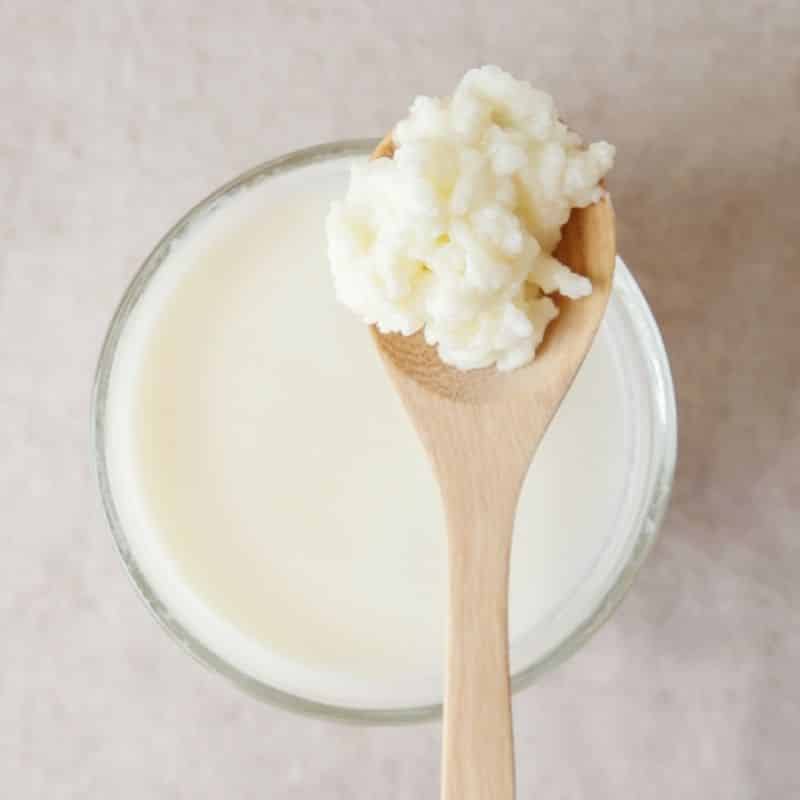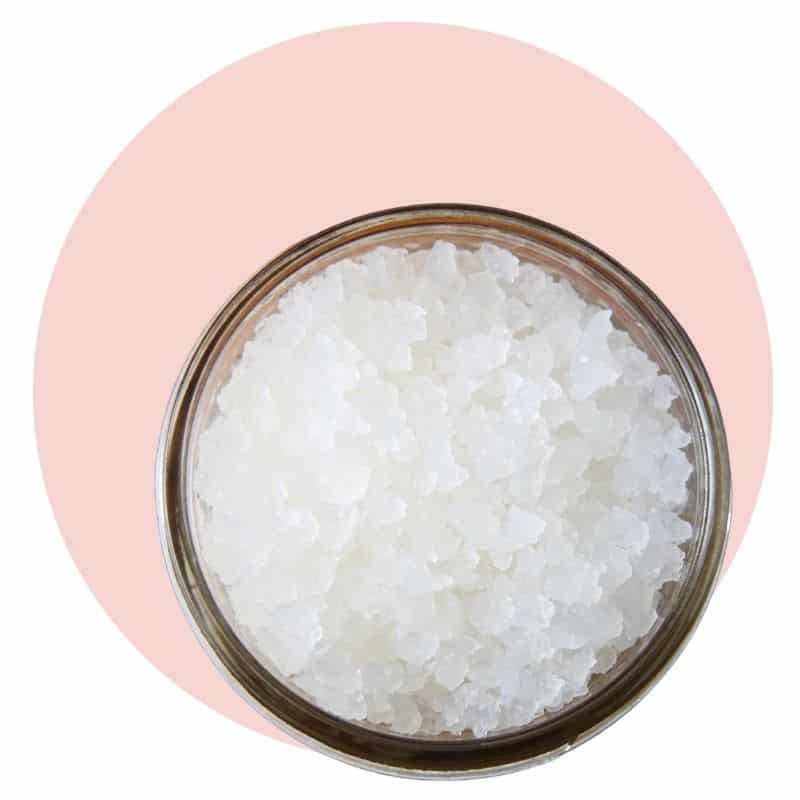
how to make milk kefir

meet the ferment*…
history: Milk kefir has been consumed for thousands of years; while its exact origins are surrounded by many stories and legends, it is thought to have originated in the Caucasus mountains, fermented naturally in bags made of animal hide. It later made its way to Russia.
what is it? Fermented milk
flavour: Sour, a little fizzy
The gelatinous structure of milk kefir grains is home to a variety of bacteria and yeasts. Milk kefir grains feast on the lactose in milk. The lactose nourishes the grains and this allows them to reproduce and grow in size. The grains produce by-products.
Well-maintained milk kefir grains can be kept to ferment fresh kefir, as long as you look after them.
ingredients
5g milk kefir grains per 250ml milk
250ml whole milk
equipment
(included in our All in One Fermentation Kit)
500ml jar
gauze
other equipment
wooden or plastic spatula
plastic sieve
rubber band

method
- Wash your jar in hot soapy water, then place it in the oven at 100°C for 15-20 mins to sterilise it, then leave to cool.
- Add the milk kefir grains to the 500ml jar and pour the milk over the top. Give the milk a gentle stir with a clean spoon to evenly distribute the microbes. Cover the jar with the gauze and fix it in place with a rubber band.
- Set aside for 24 hours at room temperature, keeping the jar away from direct sunlight.
- After 24 hours, stir and judge its taste and consistency. When the milk has thickened and tastes pleasantly tangy, it’s ready. If not, replace the gauze and rubber band and continue fermenting at room temperature for another 24 hours.
- Once ready, strain the grains out by pouring the jars contents through a sieve over a bowl to catch the finalised kefir. Transfer milk kefir to a clip top bottle, it can be used immediately or covered tightly and stored in the fridge for up to one week.
- To begin another batch repeat using the 500ml jar.
storage
Milk kefir can be stored in the fridge for up to one week.
“gaahhh” confused? need help?
Milk kefir grains are globular colonies of bacteria and yeast living together in tight clusters in a symbiotic relationship.
It’s a cultured milk product, so it has a mildly sweet, yet tangy flavour, reminiscent of yoghurt. Its sourness comes from the bacteria within the grains fermenting lactose primarily into lactic acid.
The amount will vary from batch to batch. A small amount of naturally occurring alcohol is present in the finished product, normally around 1% by volume.
It is not possible to successfully exchange one for the other as the specific strains of microorganisms in milk kefir and water kefir are uniquely equipped to thrive off of different sugars (lactose vs. glucose).
We recommend whole animal milk, either cow, goat or sheep. Using whole milk will produce a thick, creamy kefir. Semi–skimmed and skimmed milk will produce a much thinner kefir with a less complex flavour.
As mentioned above, the fat content of your milk plays a role in how thick your finished product will become, but thin milk kefir could be temperature related. Milk kefir will ferment faster at warmer temperatures and slower at cooler temperatures. If your jar is set near a drafty window, it may not ferment as quickly as it should, and therefore, not thicken. Try to find a reasonably warm spot in your kitchen if you can. If your milk hasn’t fermented after 48 hours, strain out the grains and start again with a fresh batch.
*Fermented foods may not be suitable for everyone, for example, if you are immunocompromised. Speak to your medical professional if you have any concerns.
